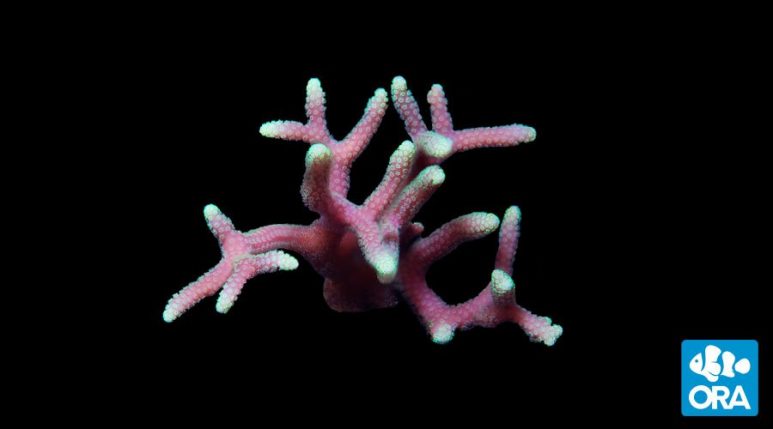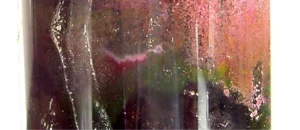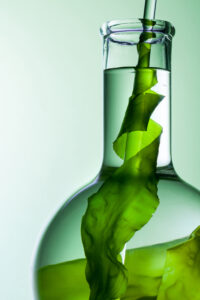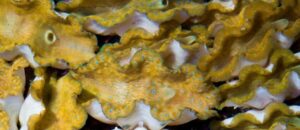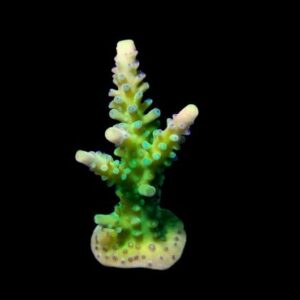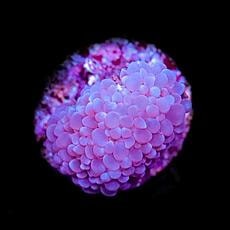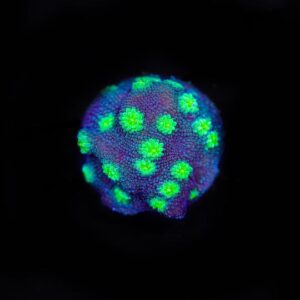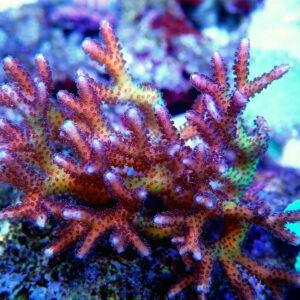Description
Birdsnest originate from several regions in the Indo-Pacific. They can be found along the coasts of Australia, in the Red Sea, and around Eastern Africa. The frags sold here, however, are aquacultured by ORA. This means that they are grown in aquariums and then fragged to be sold to hobbyists. There are a few great benefits that come with this, which we will discuss below. The Green Tip Pink Birdsnest has a deep pink base with blue-green polyps and light green growth tips. This is an unusual combination of colors that will stand out with ease in your aquarium. Some birdsnest corals prefer low light while others prefer high light. Pink birdsnest usually prefer higher light. The Green Tip Pink Birdsnest prefers medium to high light. For this reason, you should place it on the middle or top of your aquascape. Before putting it in its final place, be sure to acclimate it to the light first to avoid bleaching. As for flow, this coral requires moderate to strong flow. You are more likely to provide too little flow than too much, so place this coral where it will receive a lot of flow. Of course, random, irregular flow is ideal. Unlike some LPS corals which benefit greatly from feeding, this coral does not need to be fed. First, it contains zooxanthellae like most common hobby corals. The zooxanthellae provides the coral with its nutritional needs. Second, the polyps are too small to consume most coral foods, even those that have fine particle sizes. You will likely foul your water more than anything when trying to feed this coral. If you feel you must provide it something, dose phytoplankton. Phytoplankton can be consumed by the coral, but it won’t pollute your water. In regards to nutrients in the water, you should keep your nitrates at 1-5 ppm and your phosphates just barely detectable. This range is high enough for proper coral coloration and health but not so high that it causes lots of algae growth. As for temperature, keep it 72-78 degrees Fahrenheit and stable. Because this is an SPS coral, it is important that you keep your calcium, alkalinity, and magnesium stable. This coral can handle more fluctuation than Acropora, but the less fluctuation the better.
Care requirements
Purchase Size: 1 – 2″
Placement: Middle to top.
Lighting: Medium to high.
Flow: Moderate to strong.
Parameters: 72-78° F, dKH 8-12, pH 8.1-8.4, salinity 32-35 ppt
Calcium: 350-450 ppm
Alkalinity: 8-12 dKH
Magnesium: 1,250-1,350 ppm
More Information
So, why should you go with aquacultured corals over those collected from the wild? Corals aquacultured by ORA are well adapted to aquarium conditions and therefore have a higher chance to survive and do well in your aquarium. They are overall hardier corals as well. What’s more is that aquacultured corals are far less likely to carry pests and diseases, though you should still dip them. Most experience hobbyists would agree that the benefits of aquacultured corals greatly outweigh the cost. When you can, always go aquaculture!

